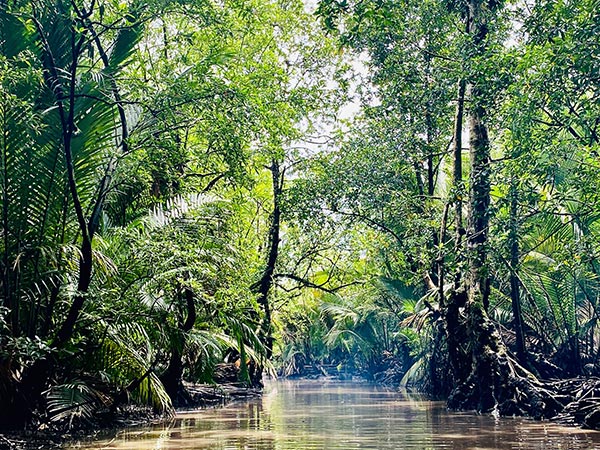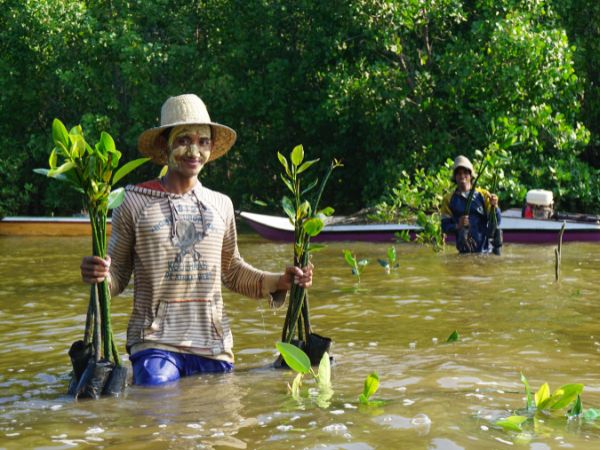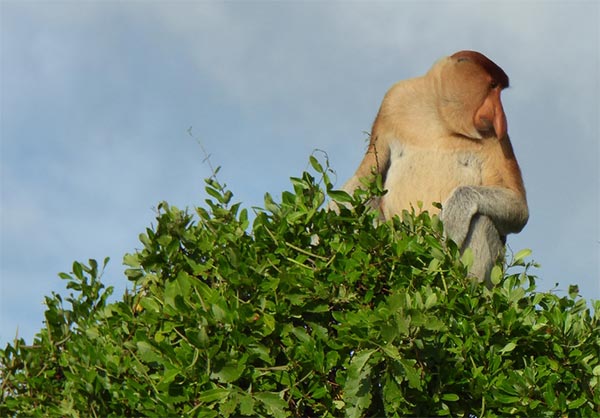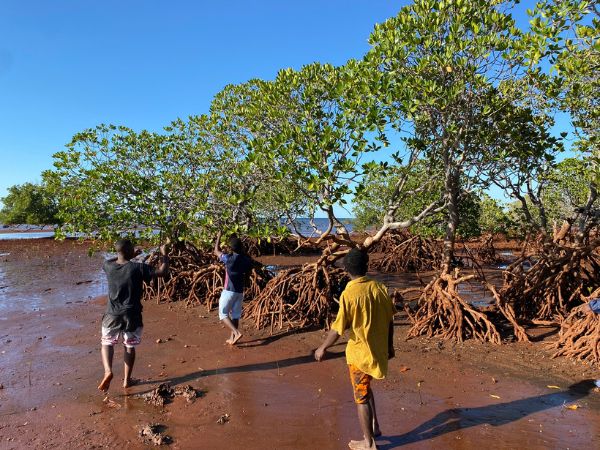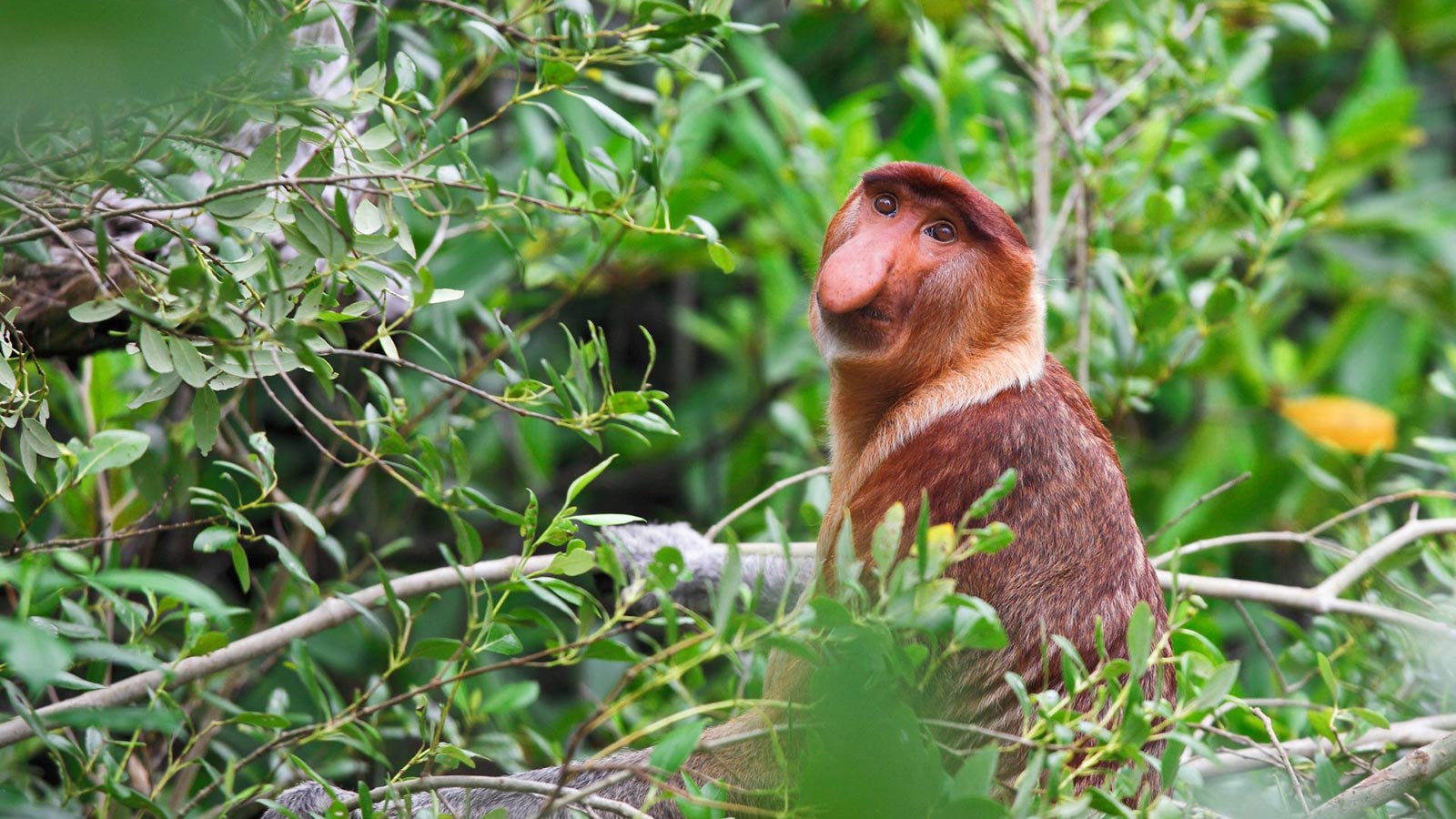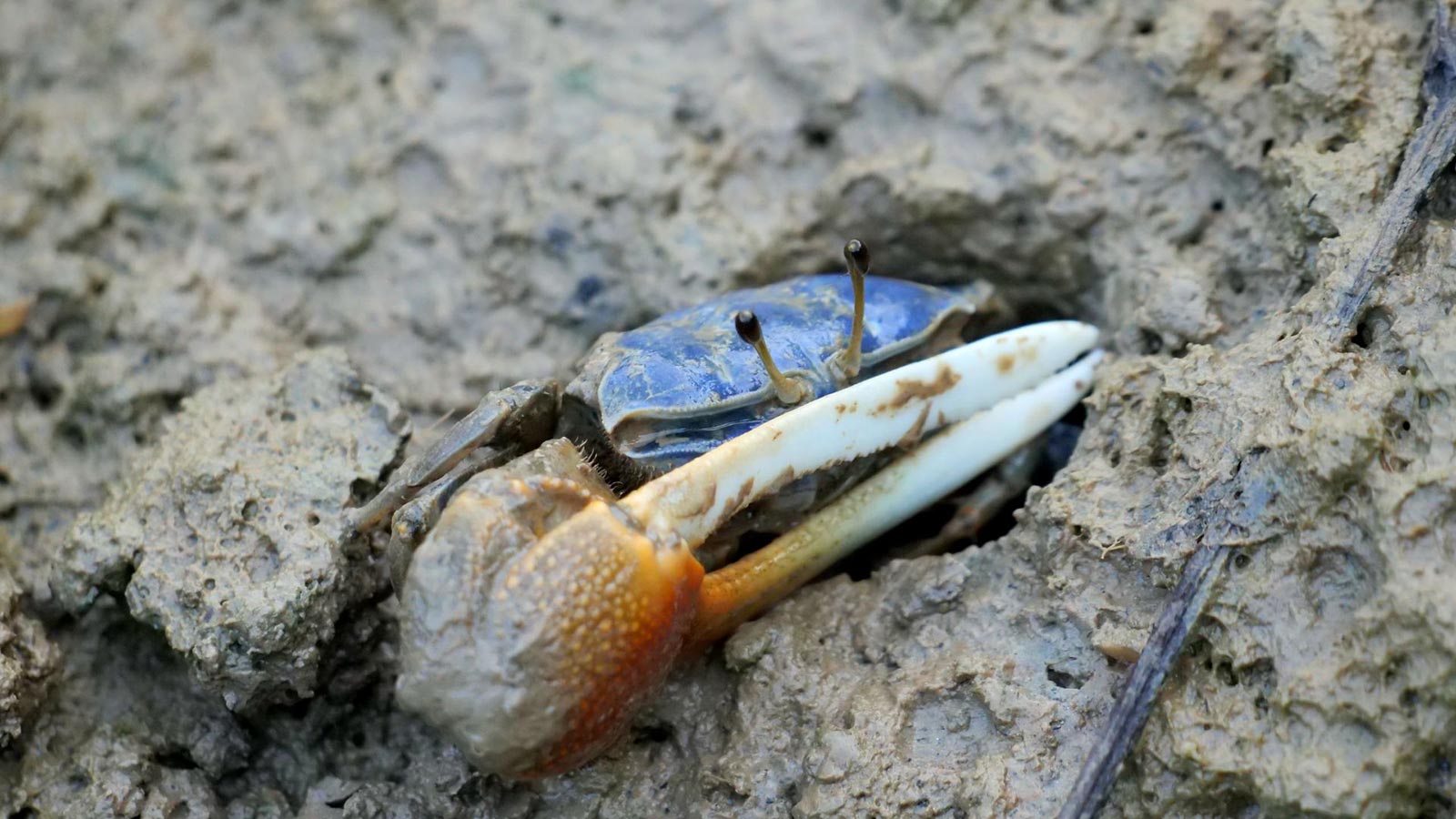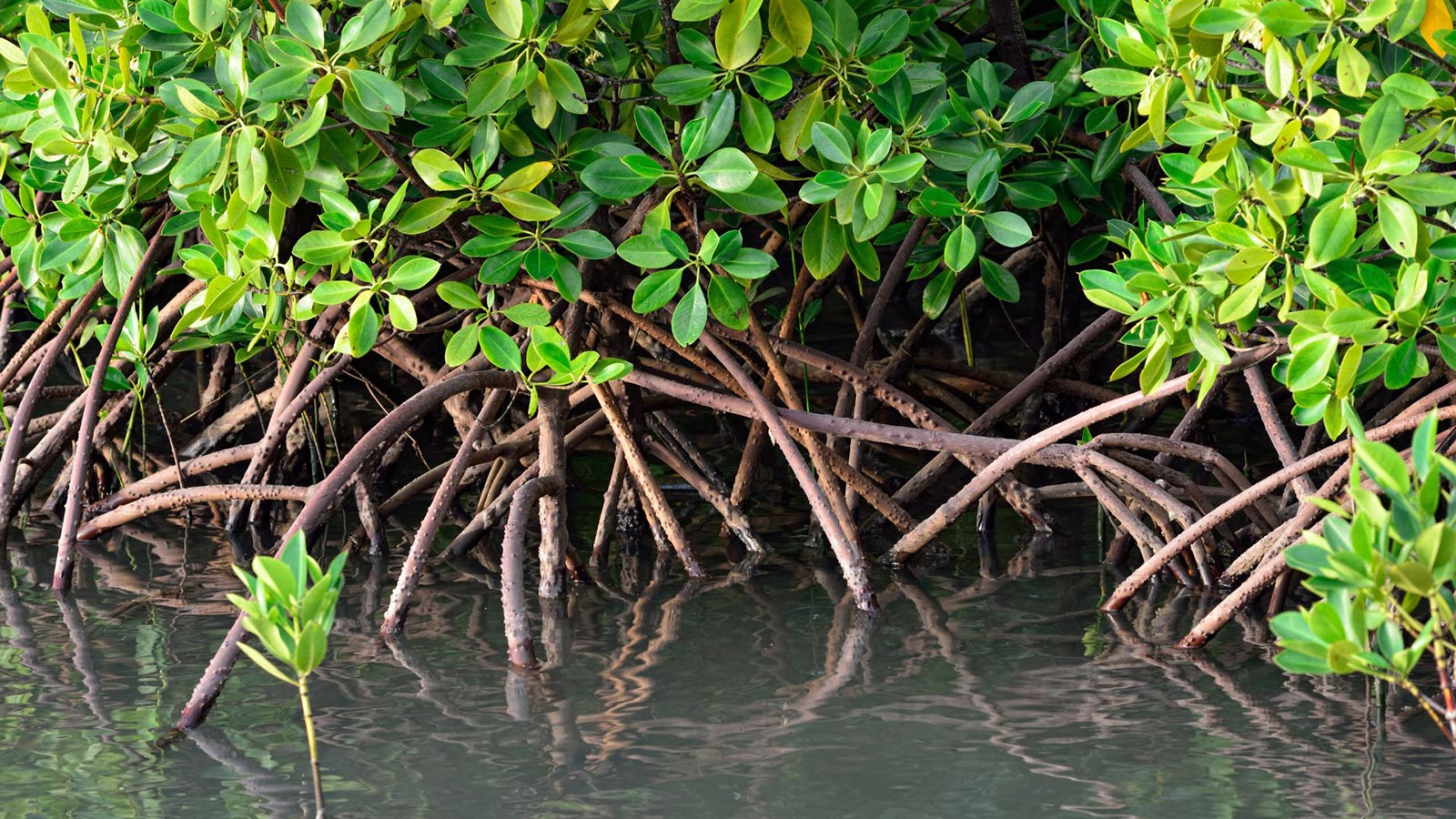
Mangroves
Subjected to the incessant swaying of the tides in inter-tropical zones, mangroves are a special ecosystem in which the mangroves, majestic trees with stilt roots, live and develop. Mangroves are kings of adaptation, thriving in a hostile environment: high salinity in warm waters; submerged roots; low soil oxygenation due to silt; unstable soil and sometimes significant sedimentation.
Benefits of mangroves
Mangroves offer multiple benefits for the climate, local populations and biodiversity.
- Mangroves are extremely productive in terms of biomass and store large quantities of carbon in the soil, enabling them to sequester 3 to 10 times more carbon than a terrestrial forest ecosystem.
- Barriers to natural disasters (tsunamis, floods, cyclones, etc.) and protection of coastal villages
- Shelter and nourishment for marine life, a real asset for local fishermen
- Only around sixty plant species can grow in mangroves, but they are the preferred habitat of many animal species that come here to take refuge or nest
- A natural filter, they can absorb nutrients and pollutants
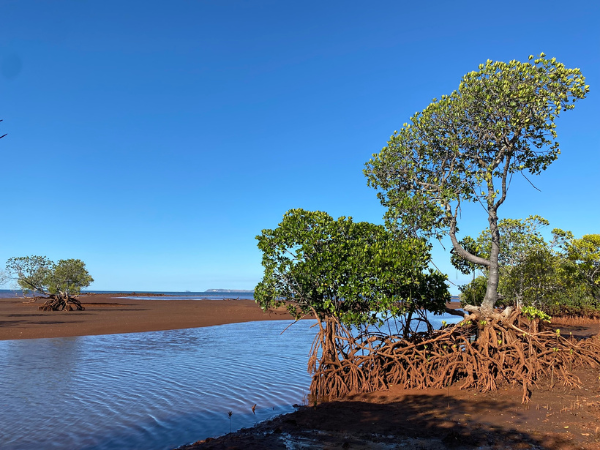
Focus on mangroves
Mangrove seeds are called propagules. They germinate directly on the tree before being planted in the soil. A marvel of nature, if a propagule does not take root when it falls from its parent tree, it can change its density to improve its buoyancy and be carried to a favourable rooting place.
Key figures on mangroves

14,7 millions
A surface area of 14.7 million hectares, equivalent to the size of Greece (Global Mangrove Watch).

75%
It naturally occupies three-quarters of the coasts and deltas of tropical regions.

40%
of mangroves lost between 1980 and 2005 (Global Mangrove Watch), and a remarkable drop in their destruction over the last decade (0.04% per year)

62%
of their disappearance is directly linked to human activity (pollution, firewood, construction equipment, aquaculture, etc.), while 38% is due to erosion, flooding or devastating storms. (IUCN)
Useful tools for mangroves

Planète Urgence is a member of the Global Mangrove Alliance and the IUCN, rich networks for sharing learning and accelerating restoration.
Podcast Indonesia: Listen to Réonaldus, our national delegate, talk to us about Indonesian mangroves in the “Combat” podcast from Baleine sous Gravillon.
Planète Urgence’s action in the field
